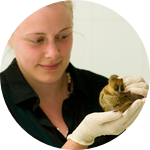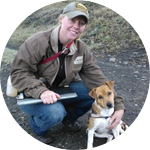About This Project
Cats are our cute and cuddly companions, but studies show that our pets can kill millions of birds and small mammals each year. With increasing urbanisation, housing developments are often close to important nature reserves, but we don't know how cats hunt in these areas. Using GPS trackers and trail cams, we will find out what our cats are up to when they leave our homes, helping develop habitat management plans that minimise conflicts between cat ownership and our need to protect biodiversity.
Ask the Scientists
Join The DiscussionWhat is the context of this research?
Cats are very popular companion animals and number around 110 million in the US and UK. Our research has shown that our pet cats can kill millions of wild birds and small mammals each year, and in the UK especially, there are lots of free roaming cats. It has also been found that even the presence of cats might be enough to affect the breeding success of birds, reducing population levels, and with people living ever closer to important nature reserves we need to know more about how cats use these habitats. In sub-urban environments cats will commonly stray around 300-400m from their homes, but we don't know how they use more rural environments, especially when their territory is close to a nature reserve.
What is the significance of this project?
With human populations ever increasing, more people are moving into urban and sub-urban areas, and they are bringing their pet cats with them. New housing developments are encroaching into important areas for wildlife, and so we need to understand how to maximise areas for development while protecting these wildlife sites. Currently we know very little about how far cats travel and what habitats they spend time in, but understanding this would help us to develop management plans when new housing developments are proposed in close proximity to nature reserves. We want to carry out this project to allow us to understand more about what management solutions might be practical, which will allow us to minimise the conflict between cat ownership and protecting important wildlife sites.
What are the goals of the project?
Across three sites, we will recruit cat owners who live adjacent to nature reserves in the UK through door knocking and leaflet dropping. Twenty cats at each site (60 in total) will be GPS tracked for one week in each month over the course of a year (to understand seasonal changes in ranging behaviour). We will also position ten camera traps within the three reserves (30 camera in total) to understand how other cats are using the habitat. The cameras will be moved across each reserve to collect data from multiple locations throughout the year. All cat owners will also be asked to give us any prey animals returned by the cats to allow us to calculate predation rates. The study will begin in March 2017 and will be completed at the end of February 2018.
Budget
We want to study the behaviour of the cats living at three sites adjacent to nature reserves, and at each we will recruit twenty cats to track using the GPS trackers over the course of a year (to look at seasonal changes). We need ten camera traps (trail cams) at each of our three sites to record how all cats (the ones not being tracked as well as our tracked cats) are using each of the nature reserves (these cameras will be moved around the reserve throughout the year of the study).
Endorsed by
Meet the Team
Team Bio
We are all members of the People and Wildlife Research Group at the University of Reading. We have been working together for over four years and our research focuses on how people's decisions affect the ecology of wild species. Our research ranges from studying leopard ecology in South Africa to the effects of domestic cat predation in the UK.
Becky Thomas
I have always had a deep fascination for wildlife, and it was this that resulted in me doing a PhD, studying the role of cats as urban predators. Since graduating I have worked at the University of Reading as part of the People and Wildlife Research Group and my research interests continue to focus on the conservation biology and ecology of birds and mammals.
Mark Fellowes
I have been passionate about wildlife since an early age, and can pinpoint the exact moment that fire was lit! I spent my formative years in the wilds of Ireland surveying birds and bringing bits of the countryside into my home. After a slight detour I completed my BSc in Zoology and a PhD in Evolutionary Biology at Imperial College London.
My research interests initially focused on trying to understand the evolutionary ecology of insect-natural enemy interactions, but over the past few years I have developed a successful strand of research in urban ecology (insects, reptiles, birds, mammals), while dipping my fingers into aspects of tropical ecology, notably with leopards and frogs.
Tara Pirie
Nature and wildlife have been in my blood ever since I can remember. As soon as I turned 16, I volunteered at the local zoo every holiday and became a full time keeper after gaining my BSc in Zoology. However I was eager to observe animals in the wild which motivated me to became a safari guide in South Africa. I gained valuable field experience during the decade of living and working in the African bush. The latter four years were dedicated to researching leopards living outside large protected areas with the Ingwe Leopard Research group. I used camera traps which were donated through the "Ingwe Camera Club" ; a scheme I set up through which people could be involved in the research. These cameras were used to monitor leopard and other carnivore movement in the area, in order to provide local authorities and landowners with data which could be used to make informed decisions regarding the wildlife. We also worked with local school children, farmers and international volunteers and tourists in order to raise awareness about the wildlife and conservation issues. I joined the University of Reading in 2013 in order to study for a PhD while conducting the research in South Africa which I hope to complete in 2016.
Lab Notes
Nothing posted yet.
Project Backers
- 2Backers
- 1%Funded
- $10Total Donations
- $5.00Average Donation



